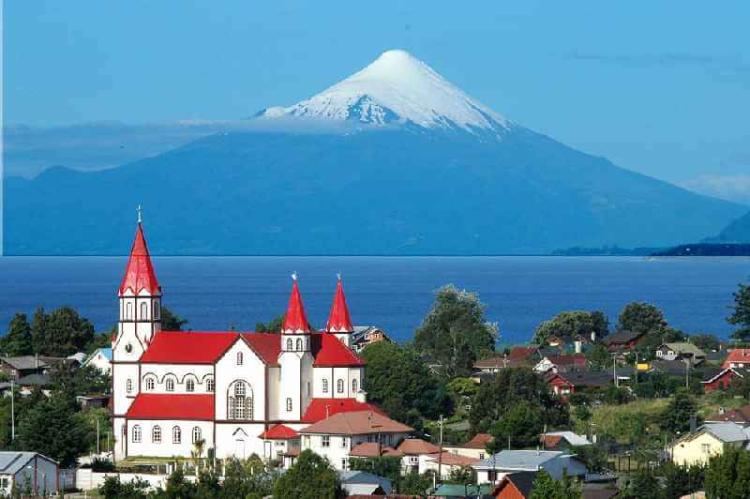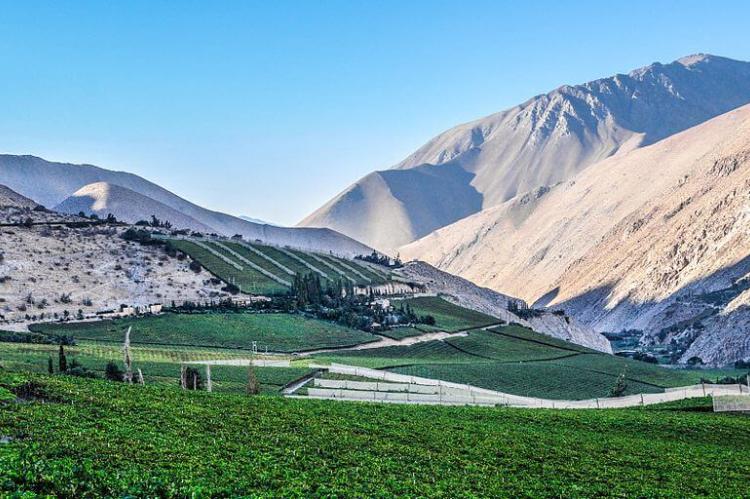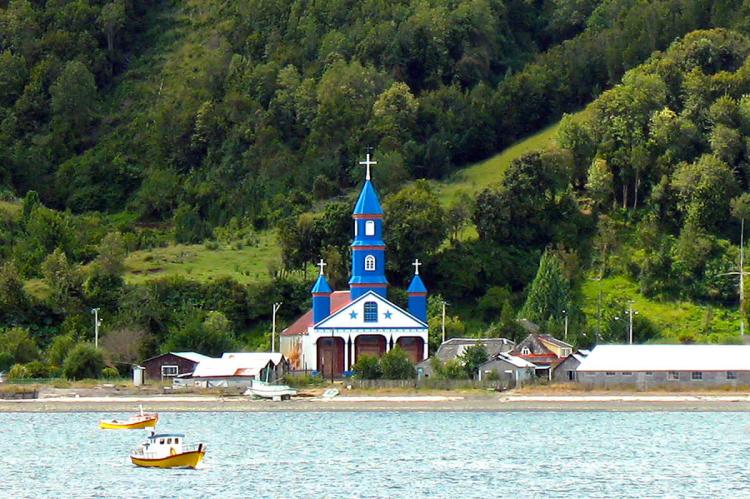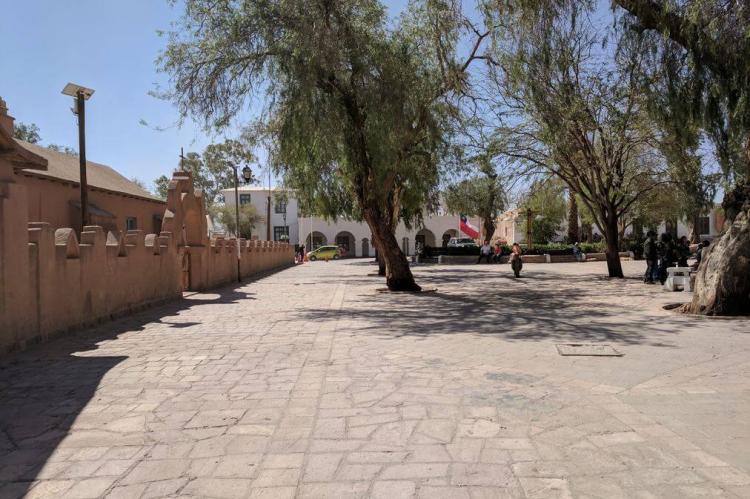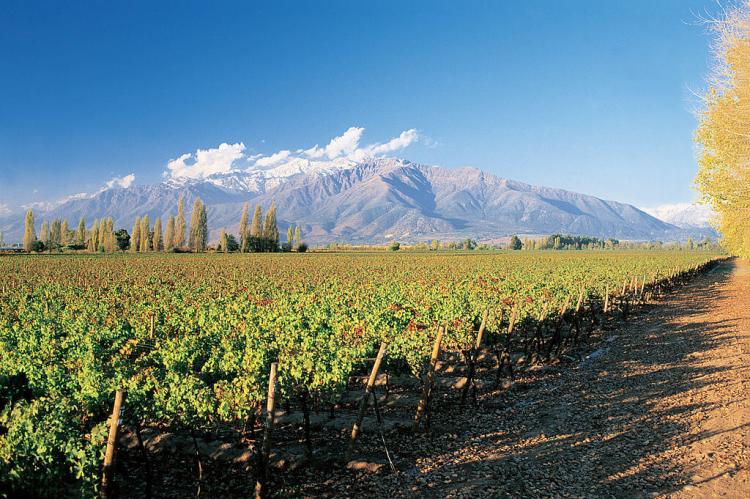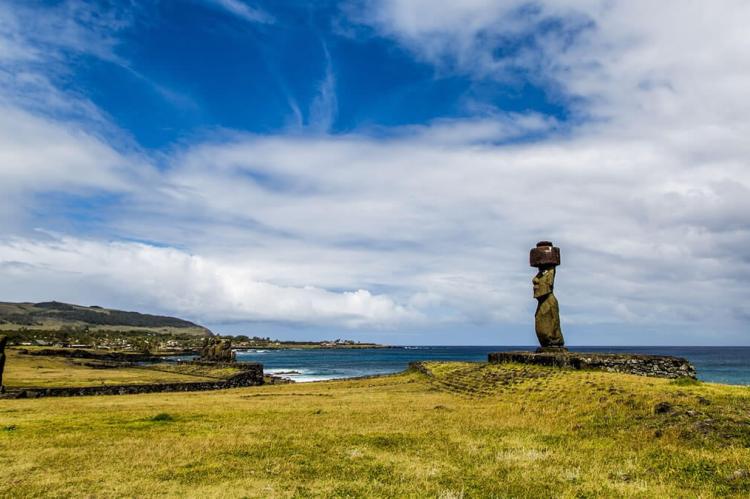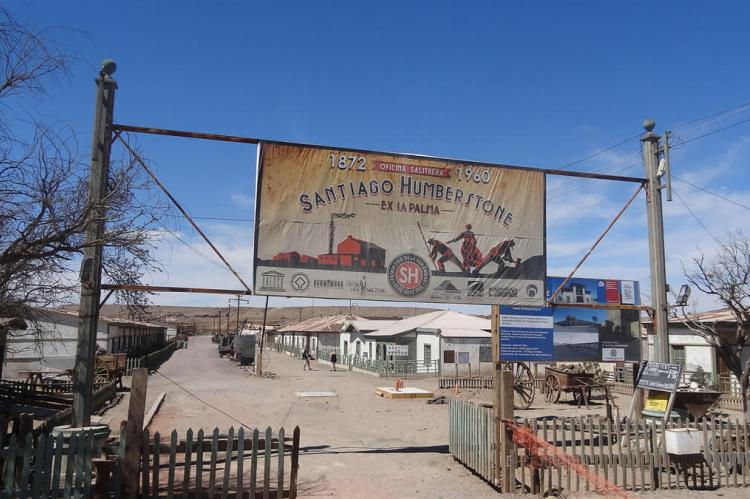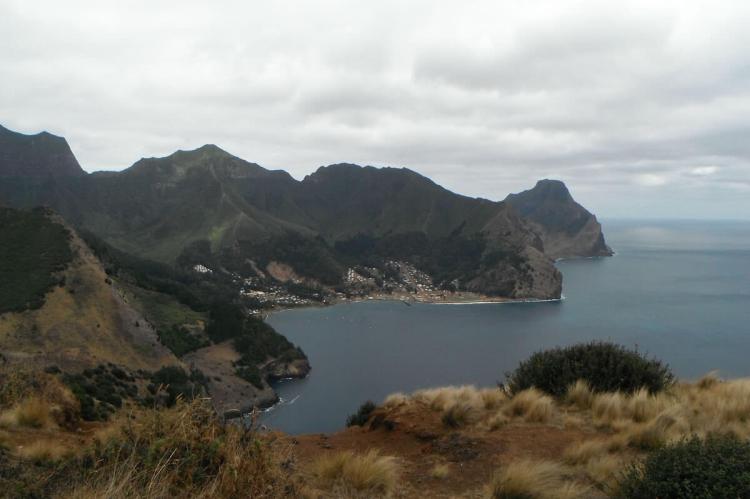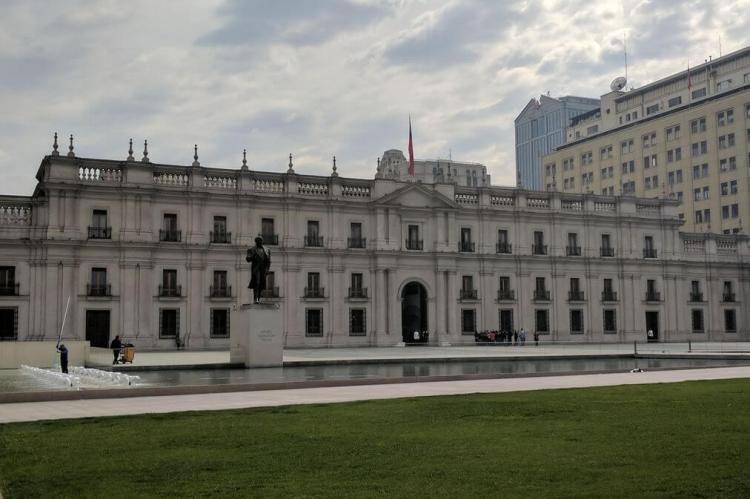Chile: Cultural Landscape
Chile's cultural landscape is distinctive in South America, shaped by its geography, Indigenous heritage, colonial history, and global influences. From the Atacama to the subantarctic, this narrow land fosters diverse cultural expressions reflecting the unity and diversity of the Chilean experience.
The Cultural Landscape of Chile: Heritage, Identity, and Transformation
Chile's cultural landscape represents one of the most distinctive and complex tapestries in South America, shaped by its unique geography, Indigenous heritage, colonial history, and modern global influences. Stretching over 4,300 kilometers (2,670 miles) from the Atacama Desert in the north to the subantarctic regions in the south, this narrow ribbon of land has fostered diverse cultural expressions that reflect both the unity and diversity of the Chilean experience. The nation's cultural identity emerges from the intersection of pre-Columbian civilizations, Spanish colonial legacy, waves of European immigration, and contemporary globalization, creating a society that maintains strong traditional roots while embracing modern innovation.
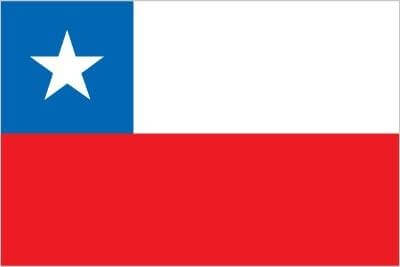
The official flag of Chile.
Cultural Heritage: Foundations of Chilean Identity
Indigenous Foundations
Chile's cultural heritage begins with its Indigenous peoples, whose civilizations flourished across the diverse landscapes long before European contact. The Mapuche, Chile's largest Indigenous group, developed a sophisticated society in the central and southern regions, creating a rich oral tradition, complex social structures, and a deep spiritual connection to the land that continues to influence Chilean culture today. Their language, Mapudungun, remains spoken by approximately 260,000 people and has contributed numerous words to Chilean Spanish, particularly geographical terms and names for flora and fauna.
In the northern regions, the Atacameño and Diaguita peoples adapted to the harsh desert environment, developing advanced agricultural techniques and creating distinctive artistic traditions, including textiles and ceramics that continue to inspire contemporary Chilean crafts. The Chinchorro culture of the far north created some of the world's oldest mummies, leaving an archaeological legacy that speaks to the sophistication of early Chilean civilizations.
The Rapa Nui people of Easter Island (Isla de Pascua) contributed one of the world's most enigmatic cultural treasures through their monumental moai statues and unique Polynesian heritage. Their culture, though geographically isolated, forms an integral part of Chile's national identity and represents the country's connection to the Pacific world.
Colonial Legacy and Mestizaje
The Spanish conquest, beginning with Diego de Almagro's expedition in 1535 and Pedro de Valdivia's colonization efforts starting in 1540, introduced European cultural elements that would fundamentally reshape Chilean society. The colonial period established the Spanish language, Catholic Christianity, and European artistic and architectural traditions as dominant cultural forces. However, unlike many other Latin American colonies, Chile's colonial experience was characterized by prolonged resistance, particularly from the Mapuche, which created a unique cultural dynamic of conflict and accommodation.
The process of mestizaje, or racial and cultural mixing, produced a predominantly mixed-race population that combined Indigenous, Spanish, and later European elements. This blending created distinctive Chilean cultural expressions, from cuisine that merged Indigenous ingredients with Spanish cooking techniques to folk music that incorporated both European and Indigenous instruments and rhythms.
Colonial architecture left an indelible mark on Chilean cities, with Spanish colonial churches, houses, and public buildings defining the historic centers of major cities. The influence of Catholic Baroque architecture is evident in churches throughout the country, while colonial urban planning established the grid patterns that still characterize many Chilean cities.
Immigration Waves and Cultural Diversity
The 19th and early 20th centuries witnessed significant waves of European immigration, adding new layers to Chilean culture. German immigration to the Lake District and southern regions beginning in the 1840s introduced new agricultural techniques, architectural styles, and cultural traditions that remain visible today. German-Chilean communities established brewing traditions, distinctive wooden architecture, and educational institutions that continue to influence regional culture.
British influence, although less numerically significant, had a profound impact on Chilean society, particularly in commerce, education, and sports. British immigrants established schools, introduced football (soccer), and made significant contributions to the development of Chile's merchant marine and industrial sectors.
Italian, French, and other European immigrants brought additional cultural elements, contributing to Chile's reputation for wine production, culinary traditions, and artistic expression. The influence of French culture was particularly strong among Chile's elite, affecting architecture, fashion, and intellectual life.
More recent immigration from other Latin American countries, particularly Peru, Bolivia, and Haiti, has added new dimensions to Chilean cultural life, creating neighborhoods with distinct cultural characteristics and introducing new musical, culinary, and religious traditions.
Contemporary Cultural Influences
Literature and Intellectual Tradition
Chile has produced a remarkable literary tradition that has gained international recognition, most notably through Nobel Prize winners Gabriela Mistral (1945) and Pablo Neruda (1971). This literary heritage reflects the complexity of Chilean identity, addressing themes of social justice, natural beauty, love, and political struggle that resonate throughout Chilean culture.
Contemporary Chilean literature continues to evolve, with authors like Roberto Bolaño, Isabel Allende, and Antonio Skármeta gaining international acclaim for works that explore Chilean history, identity, and the human condition. The country's strong tradition of literary magazines, publishing houses, and cultural institutions supports a vibrant intellectual culture that influences broader social discourse.
Music and Performing Arts
Chilean music reflects the country's cultural diversity, from traditional folk music (música folklórica) that combines Indigenous and Spanish elements to contemporary rock, pop, and hip-hop that engages with global trends while maintaining distinctly Chilean characteristics. The nueva canción (new song) movement of the 1960s and 1970s, led by artists like Víctor Jara and Inti-Illimani, created politically engaged music that became internationally recognized and continues to influence Chilean popular culture.
Traditional instruments like the charango, quena, and bombo reflect Indigenous heritage, while the guitar and accordion show European influence. Contemporary Chilean music incorporates electronic elements and global influences, often drawing on traditional themes and sounds.
Theater and dance in Chile maintain strong traditions, with numerous companies and festivals supporting both classical and experimental performances. The country's dance traditions range from traditional folk dances, such as the cueca (Chile's national dance), to contemporary choreography that addresses social and political themes.
Visual Arts and Crafts
Chilean visual arts encompass both traditional crafts that maintain Indigenous and colonial techniques, as well as contemporary art that engages with international movements while addressing specifically Chilean themes. Traditional crafts, including pottery, textiles, and woodworking, preserve pre-Columbian and colonial techniques, often produced by Indigenous communities and rural artisans.
Contemporary Chilean art has gained international recognition, with artists addressing themes of memory, identity, and social justice that reflect the country's complex history. The visual arts scene includes galleries, museums, and public art installations that make culture accessible to diverse audiences.
Cuisine and Culinary Traditions
Chilean cuisine represents a synthesis of Indigenous ingredients and techniques with Spanish colonial influences and later immigrant contributions. Traditional dishes like empanadas, cazuela, and pastel de choclo reflect this cultural blending, utilizing Indigenous ingredients such as corn, potatoes, and quinoa, combined with Spanish cooking methods and seasonings.
The country's extensive coastline provides an abundance of seafood that forms the basis for many traditional dishes, while its diverse agricultural regions contribute a wide range of fruits, vegetables, and grains that define regional cuisines. Wine production, introduced by Spanish colonists but refined through French and Italian influence, has become a defining element of Chilean culture and a major export industry.
Contemporary Chilean cuisine continues to evolve, with chefs incorporating international techniques while celebrating traditional ingredients and preparations. This culinary renaissance reflects broader cultural trends toward valuing local traditions while embracing global influences.
Cultural Challenges in Contemporary Chile
Indigenous Rights and Cultural Preservation
One of the most significant challenges facing Chilean culture involves the relationship between the dominant mestizo society and Indigenous communities, particularly the Mapuche. Despite constitutional recognition and various government programs, Indigenous communities continue to struggle for land rights, cultural recognition, and economic opportunities. The preservation of Indigenous languages, particularly Mapudungun, faces ongoing challenges as younger generations often adopt Spanish as their primary language.
Efforts to incorporate Indigenous perspectives into education, media, and public policy reflect growing recognition of Indigenous contributions to Chilean culture, but implementation remains uneven. The challenge lies in creating genuine multicultural inclusion rather than tokenistic recognition of Indigenous heritage.
Regional Identity vs. National Unity
Chile's extreme geography has created distinct regional cultures that sometimes conflict with efforts to maintain national unity. The northern mining regions, central agricultural valleys, and southern forest areas have developed distinct cultural characteristics that reflect their different economic bases, immigration patterns, and relationships with the landscape.
Balancing regional cultural expression with national identity represents an ongoing challenge, particularly as globalization and internal migration create new patterns of cultural interaction. The centralization of political and economic power in Santiago creates additional tensions between the capital and regional areas.
Globalization and Cultural Authenticity
Like many countries, Chile faces challenges in maintaining cultural authenticity while engaging with global cultural trends. The influence of North American and European popular culture, transmitted through media, technology, and consumer goods, creates pressure on traditional cultural expressions and local cultural industries.
The challenge involves finding ways to participate in global cultural exchanges while preserving and developing distinctly Chilean cultural expressions. This includes supporting local cultural industries, maintaining traditional crafts and practices, and ensuring that cultural education includes both global awareness and local knowledge.
Social Class and Cultural Access
Chile's high levels of economic inequality create barriers to cultural participation, which in turn affect the development and transmission of cultural traditions. Access to cultural events, education, and creative opportunities often correlates with economic status, potentially limiting cultural development and creating cultural divisions within society.
Efforts to democratize cultural access through public funding, community programs, and educational initiatives represent important responses to this challenge, but implementation remains uneven across different regions and social groups.
Memory and Historical Reconciliation
The legacy of the military dictatorship (1973-1990) continues to influence Chilean culture, creating ongoing debates about memory, justice, and national reconciliation. Cultural expressions addressing this period, including literature, film, theater, and visual arts, play important roles in processing collective trauma and constructing national narratives.
The challenge involves creating space for diverse perspectives on this difficult period while fostering national dialogue and reconciliation. Cultural institutions, artists, and intellectuals continue to play crucial roles in this ongoing process.
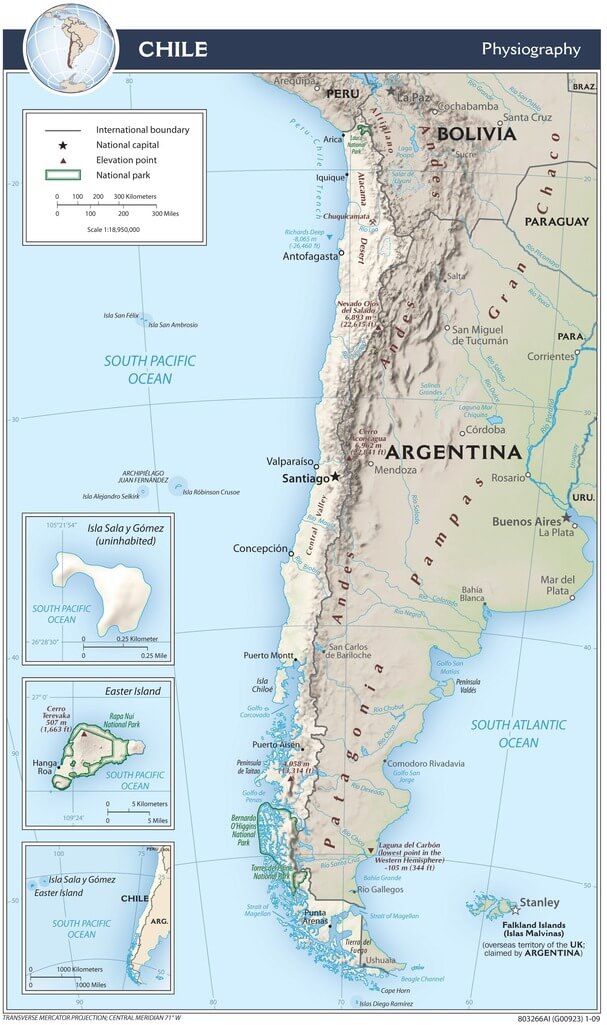
Physiographic map of Chile.
Major Cities and Metropolitan Areas
Santiago Metropolitan Region (Population: ~8.1 million)
Chile's capital and largest metropolitan area dominates the country's cultural, economic, and political life. Santiago is home to the majority of Chile's cultural institutions, including major museums, theaters, universities, and media organizations. The city reflects Chile's cultural diversity through its neighborhoods, from historic colonial centers to modern business districts and immigrant communities. Santiago's cultural offerings include world-class museums, such as the Chilean Museum of Pre-Columbian Art, vibrant neighborhood cultural centers, and numerous festivals held throughout the year. The metropolitan area comprises diverse communes, each with distinct cultural characteristics, ranging from the affluent eastern sectors to the working-class western areas.
Greater Valparaíso (Population: ~1.0 million)
Chile's principal port and a UNESCO World Heritage Site, Valparaíso is renowned for its bohemian culture, street art, and literary heritage. The city's unique geography, built on hills overlooking the Pacific Ocean, has created a distinctive urban landscape celebrated in Chilean literature and art. Pablo Neruda lived here, and the city continues to attract artists, writers, and musicians. Valparaíso's cultural identity is deeply rooted in its port heritage, European immigration history, and its status as a hub for alternative culture and political activism.
Greater Concepción (Population: ~730,000)
Located in south-central Chile, Concepción serves as the cultural and educational center of the Biobío Region. The metropolitan area is home to several universities and is renowned for its vibrant student culture and active political scene. The region's cultural identity is shaped by its industrial heritage, proximity to Mapuche communities, and its role in Chilean independence movements. Concepción has produced numerous important Chilean writers, musicians, and political figures.
La Serena-Coquimbo (Population: ~450,000)
This northern metropolitan area combines colonial heritage with modern tourism development. La Serena, renowned for its well-preserved colonial architecture, serves as a cultural hub for northern Chile, while Coquimbo offers port facilities and a rich fishing culture. The region's cultural identity is shaped by its mining heritage, colonial history, and growing prominence in astronomical tourism, thanks to nearby observatories.
Greater Temuco (Population: ~380,000)
Located in the heart of the Araucanía Region, Temuco serves as an important cultural bridge between Chilean and Mapuche societies. The city and its surrounding area have a significant Mapuche population, making it a center for Indigenous culture, language preservation, and intercultural dialogue. The region's cultural institutions work to promote both Chilean national culture and Mapuche heritage.
Antofagasta (Population: ~360,000)
This northern port city reflects Chile's mining culture and serves as a gateway to the Atacama Desert. The city's cultural identity centers on its role in the nitrate and copper industries, immigrant heritage (particularly from Bolivia and Peru), and adaptation to desert life. Antofagasta hosts cultural events that celebrate both mining heritage and northern Chilean traditions.
Greater Valdivia (Population: ~350,000)
Located in southern Chile, Valdivia reflects the strong influence of German immigration, which is evident in its architecture, cultural traditions, and educational institutions. The city serves as a regional cultural center with universities, museums, and festivals that celebrate both Chilean and German-Chilean heritage. The surrounding region's culture emphasizes forestry, river life, and environmental conservation.
Iquique (Population: ~320,000)
This northern coastal city combines mining heritage with beach tourism culture. Iquique's cultural identity reflects its role in the nitrate boom, subsequent economic transformations, and position as a free-trade zone. The city's historic district preserves architecture from its golden age, while contemporary culture adapts to the demands of tourism and commerce.
Rancagua (Population: ~280,000)
Located south of Santiago, Rancagua serves as the center of Chile's most important mining region (centered on the El Teniente copper mine) and agricultural area. The city's cultural identity combines rural Chilean traditions with mining culture, creating a unique blend of folk traditions and industrial heritage.
Puerto Montt (Population: ~270,000)
This southern port city serves as the gateway to Chilean Patagonia and the Lake District. Puerto Montt's cultural identity is shaped by its role in connecting the isolated southern regions with the rest of Chile, the growth of the salmon industry, and its German immigration heritage. The city serves as a cultural center for southern Chile's forestry and fishing communities.
Administrative Divisions of Chile
Chile is organized into 16 regions (regiones), which are further subdivided into 56 provinces (provincias) and 346 communes (comunas). This administrative structure, established through various reforms since the 1970s, reflects both geographic realities and efforts to decentralize government functions.
Arica y Parinacota Region (XV)
Capital: Arica
Provinces: Arica, Parinacota
Chile's northernmost region, established in 2007, borders Peru and Bolivia. The region's culture reflects a significant Indigenous influence, particularly from the Aymara, and historical connections to Peru. Arica serves as a port for Bolivian trade, creating unique cultural exchanges. The region faces challenges related to Indigenous rights, border dynamics, and economic development based on agriculture and services.
Tarapacá Region (I)
Capital: Iquique
Provinces: Iquique, Tamarugal
This northern region centers on nitrate mining heritage and contemporary free-trade zone economics. The region's culture combines Indigenous traditions, primarily Aymara, with a history of the mining boom and contemporary commercial development. Iquique's historic district reflects the wealth generated during the nitrate era, while rural areas maintain traditional Indigenous practices.
Antofagasta Region (II)
Capital: Antofagasta
Provinces: Antofagasta, El Loa, Tocopilla
Chile's largest region by area, dominated by the Atacama Desert and copper mining. The region's culture centers on mining communities, desert adaptation, and astronomical observation. The presence of major observatories has fostered a unique scientific tourism culture, while mining communities have maintained distinct social structures and traditions.
Atacama Region (III)
Capital: Copiapó
Provinces: Copiapó, Chañaral, Huasco
This region combines a rich mining heritage, particularly in silver and copper, with agricultural valleys and growing tourism. The cultural identity reflects mining boom and bust cycles, Indigenous heritage (Diaguita), and adaptation to desert conditions. The region has developed wine production and alternative agriculture, which add to its cultural diversity.
Coquimbo Region (IV)
Capital: La Serena
Provinces: Elqui, Limarí, Choapa
Known for its colonial architecture, pisco production, and astronomical tourism. The region's culture is a blend of colonial heritage, mining traditions, and a growing tourism industry. La Serena's preserved colonial center contrasts with mining towns and rural agricultural communities. The region claims to be the birthplace of Chilean pisco and maintains strong traditions related to grape cultivation and distillation.
Valparaíso Region (V)
Capital: Valparaíso
Provinces: Valparaíso, Isla de Pascua, Los Andes, Petorca, Quillota, San Antonio, San Felipe de Aconcagua
This region encompasses Chile's main port, part of the Santiago metropolitan area, and Easter Island. The cultural diversity encompasses Valparaíso's bohemian port culture, Santiago's cosmopolitan influences, agricultural valley traditions, and the Polynesian heritage of Rapa Nui (Easter Island). The region represents Chile's most culturally diverse area, combining urban sophistication, port traditions, and unique island culture.
Metropolitan Region of Santiago (RM)
Capital: Santiago
Provinces: Santiago, Chacabuco, Cordillera, Maipo, Melipilla, Talagante
Chile's political, economic, and cultural center, containing over 40% of the national population. The region's culture dominates national cultural production through media, universities, and cultural institutions. However, it also faces challenges related to inequality, environmental problems, and tensions between cosmopolitan and traditional values.
O'Higgins Region (VI)
Capital: Rancagua
Provinces: Cachapoal, Cardenal Caro, Colchagua
This central region is characterized by a combination of mining (El Teniente copper mine), agriculture, and wine production. The cultural identity reflects rural Chilean traditions, the culture of mining communities, and the growing wine tourism industry. The region maintains strong folk traditions and serves as a center for traditional Chilean country life (vida campesina).
Maule Region (VII)
Capital: Talca
Provinces: Talca, Cauquenes, Curicó, Linares
Chile's traditional agricultural heartland is renowned for its wine production and rich rural culture. The region maintains strong traditional Chilean rural culture, including folk music, crafts, and agricultural traditions. Wine production has garnered international attention, contributing to tourism development and fostering a cultural blend between traditional and modern influences.
Ñuble Region (XVI)
Capital: Chillán
Provinces: Diguillín, Itata, Punilla
Chile's newest region, established in 2018, is renowned for its rich agricultural traditions and vibrant folk culture. The region maintains strong traditional rural Chilean culture and serves as a center for folk arts, traditional crafts, and rural festivals. Chillán is famous for its Saturday market and traditional food products.
Biobío Region (VIII)
Capital: Concepción
Provinces: Concepción, Arauco, Biobío
This region combines industrial development, forestry, and fishing with strong educational and cultural institutions. The cultural identity reflects industrial heritage, university culture, and proximity to Mapuche communities. The region has historically been a center for political activism and social movements.
Araucanía Region (IX)
Capital: Temuco
Provinces: Cautín, Malleco
The heart of Mapuche territory, this region represents Chile's most significant Indigenous cultural area. The cultural landscape encompasses ongoing tensions and dialogue between Chilean and Mapuche societies, as well as efforts at cultural preservation and revitalization, alongside the development of intercultural institutions. The region faces ongoing challenges related to land rights, cultural recognition, and economic development.
Los Ríos Region (XIV)
Capital: Valdivia
Provinces: Valdivia, Ranco
Established in 2007, this region emphasizes environmental conservation, German immigration heritage, and river-based culture. The cultural identity combines German-Chilean traditions, forestry culture, and growing environmental awareness. Valdivia serves as a university center that promotes both cultural preservation and environmental research.
Los Lagos Region (X)
Capital: Puerto Montt
Provinces: Llanquihue, Chiloé, Osorno, Palena
This southern region encompasses diverse cultural areas, from the German-influenced Lake District to the unique Chiloé island culture. The region's cultural diversity encompasses German-Chilean communities around the lakes, the distinctive Chiloé culture with its wooden churches and rich mythology, the salmon industry culture, and the development of tourism. Chiloé maintains unique traditions including distinctive architecture, mythology, and crafts.
Aysén Region (XI)
Capital: Coyhaique
Provinces: Coyhaique, Aysén, Capitán Prat, General Carrera
Chile's most sparsely populated region is known for pristine wilderness and pioneer culture. The cultural identity reflects a frontier heritage, environmental conservation efforts, and adaptation to extreme isolation and climate conditions. The region attracts eco-tourism and serves as a symbol of Chilean wilderness preservation.
Magallanes and Chilean Antarctica Region (XII)
Capital: Punta Arenas
Provinces: Magallanes, Antártica Chilena, Tierra del Fuego, Última Esperanza
Chile's southernmost region, including Chilean Antarctic territory, is known for its sheep ranching heritage and extreme geography. The cultural identity reflects a pioneer heritage, international influences stemming from the Strait of Magellan's location, and adaptation to the extreme southern conditions. The region maintains unique traditions related to sheep ranching, maritime culture, and international connections.

Map depicting the administrative regions of Chile.
Chile's Five Natural Regions (CORFO Classification)
The Chilean Development Corporation (CORFO) traditionally classified Chile into five natural regions based on climate, geography, and economic characteristics. While administrative divisions have evolved, these natural regions continue to influence cultural and economic patterns.
Far North (Norte Grande)
Regions: Arica y Parinacota, Tarapacá, Antofagasta
This hyperarid region encompasses the Atacama Desert and is characterized by a mining-based economy, extremely dry climate, and sparse population. The cultural landscape reflects adaptation to desert conditions, the culture of mining communities, and a significant Indigenous presence, primarily among the Aymara. The region's economy centers on copper, lithium, and other mineral extraction, with growing astronomical tourism. Cultural challenges include water scarcity, Indigenous rights, and economic dependence on commodity cycles.
Learn More: The Arid Majesty of Chile's Norte Grande: A Land of Extremes and Resilience
Near North (Norte Chico)
Regions: Atacama, Coquimbo
This semi-arid region represents a transition zone between desert and Mediterranean climates, supporting limited agriculture, mining, and growing tourism. The cultural identity is a combination of mining heritage, colonial influences, and agricultural traditions in the river valleys. The region produces pisco, maintains colonial architecture, and serves as a gateway to astronomical tourism. Economic diversification includes wine production, agriculture, and service industries.
Learn More: The Semi-Arid Heart of Chile: Ecology, Agriculture, and Astronomy in the Norte Chico
Central Zone (Zona Central)
Regions: Valparaíso, Metropolitan, O'Higgins, Maule, Ñuble
Chile's demographic and economic heartland is characterized by a Mediterranean climate, intensive agriculture, and urban concentration. This region comprises the majority of Chile's population and cultural institutions, shaping the dominant national culture while also preserving strong rural traditions. The cultural landscape encompasses cosmopolitan Santiago, historic Valparaíso, wine-producing valleys, and traditional rural communities. The region faces challenges related to urban growth, environmental pressure, and inequality.
Learn More: The Mediterranean Heartbeat: Exploring Chile's Zona Central
South (Zona Sur)
Regions: Biobío, Araucanía, Los Ríos, Los Lagos
This temperate region is characterized by forests, lakes, rivers, and significant rainfall, which supports forestry, agriculture, and tourism. The cultural diversity includes Mapuche Indigenous communities, German immigration influence, university culture, and traditional forestry communities. The region represents Chile's most culturally diverse area outside of Santiago, with ongoing efforts to strike a balance between development and respect for Indigenous rights and environmental conservation.
Learn More: Embracing the Emerald South: Exploring Chile's Zona Sur
Far South (Zona Austral)
Regions: Aysén, Magallanes and Chilean Antarctica
Chile's most isolated and sparsely populated region, characterized by extreme weather, pristine wilderness, and frontier culture. The cultural identity reflects pioneer heritage, adaptation to extreme conditions, and growing environmental consciousness. The region's economy is characterized by a combination of traditional sheep ranching, fishing, and growing eco-tourism. Cultural challenges include isolation, economic sustainability, and striking a balance between development and conservation.
Learn More: The Wild Frontier: Exploring Chile's Zona Austral
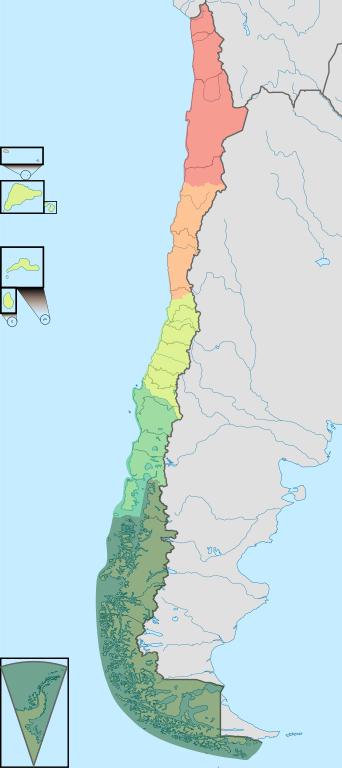
Map depicting the geographic regions of Chile.
Chile's Historical, Cultural, and Natural Landmarks
Chile's diverse geography stretches from the world's driest desert in the north to the windswept wilderness of Patagonia in the south, creating a remarkable tapestry of historical, cultural, and natural landmarks that reflect the nation's rich heritage and stunning natural beauty.
The Far North: Desert Treasures and Ancient Cultures
In the extreme north, the Arica y Parinacota Region serves as a gateway to Chile's most ancient history. The San Miguel de Azapa Archaeological Museum houses the world's oldest mummies from the Chinchorro culture, representing over 7,000 years of human adaptation to coastal desert conditions. High in the Andes, the villages of Putre and Parinacota showcase Aymara communities that have maintained their traditional architecture and customs at elevations exceeding 3,500 meters. The region's natural crown jewel, Lauca National Park, preserves high-altitude wilderness where vicuñas roam among flamingo-filled lakes beneath snow-capped volcanoes. In the city of Arica itself, the cathedral designed by Gustave Eiffel stands as a symbol of the city's role as a cultural bridge connecting Chile, Peru, and Bolivia.
Moving south into the Tarapacá Region, visitors encounter remnants of Chile's nitrate boom at the Humberstone and Santa Laura Saltpeter Works, UNESCO World Heritage sites that preserve ghost towns representing the nation's economic transformation. The Pica Oasis offers a striking contrast to the surrounding desert, where traditional agriculture and hot springs culture have flourished in extreme arid conditions. Cultural traditions blend beautifully during La Tirana Festival, an annual religious celebration that combines Catholic and Indigenous elements, exemplifying the cultural syncretism of northern Chile. The massive Tarapacá Giant Geoglyph serves as a testament to pre-Columbian artistic and spiritual traditions carved into the desert landscape.
The Antofagasta Region showcases both cutting-edge science and industrial heritage. The ALMA Observatory represents the world's largest radio telescope array and Chile's prominent role in international scientific collaboration. Meanwhile, the Chuquicamata Mine stands as the world's largest open-pit copper mine, symbolizing Chile's mining heritage and its economic dependence on natural resources. The Atacama Salt Flat fosters a unique ecosystem that supports flamingo populations while also serving as a source of lithium for extraction, illustrating the ongoing tensions between environmental preservation and economic development. The otherworldly Valley of the Moon has become so renowned for its extreme landscape that it's used for Mars mission training, representing both natural beauty and scientific applications.
The Near North: Peaks and Valleys
The Atacama Region boasts some of Chile's most extreme geography, including Nevado Ojos del Salado, the world's highest volcano and Chile's highest peak, which has become a symbol of mountaineering heritage. The pristine coastal area of Bahía Inglesa combines natural beauty with a rich mining port history, while Copiapó's historic center preserves colonial architecture and buildings from the mining boom periods that represent the region's development cycles. Pan de Azúcar National Park protects coastal desert ecosystems with remarkable flora and fauna adaptations.
In the Coquimbo Region, La Serena's colonial center maintains the best-preserved colonial architecture in northern Chile, serving as a living monument to Spanish colonial heritage. The Elqui Valley has gained recognition both as a pisco production region and an astronomical tourism center, demonstrating successful agricultural adaptation and scientific development. The Gabriela Mistral Museum honors Chile's first Nobel Prize winner in her birthplace, preserving important literary heritage. Fray Jorge National Park protects a unique cloud forest existing within a desert region, representing both ecosystem preservation efforts and fascinating climatic anomalies.
Central Chile: Cultural Hearts and Urban Heritage
The Valparaíso Region contains some of Chile's most significant cultural landmarks. Valparaíso's Historic Quarter, recognized as a UNESCO World Heritage Site, embodies port culture, bohemian traditions, and urban heritage that have shaped Chilean identity. The three Pablo Neruda Houses in Valparaíso, Santiago, and Isla Negra preserve the Nobel laureate's legacy across different landscapes. Easter Island (Rapa Nui) stands as perhaps Chile's most famous UNESCO World Heritage Site, where moai statues represent Polynesian culture and ancient civilization. Aconcagua Provincial Park contains the Western Hemisphere's highest peak, representing mountaineering culture and natural grandeur.
The Metropolitan Region, centered on Santiago, houses the nation's political and cultural heart. La Moneda Palace serves as both the presidential residence and a symbol of Chilean democracy and political history. The Chilean Museum of Pre-Columbian Art maintains the premier collection representing Indigenous artistic heritage from across the Americas. Cerro San Cristóbal serves as both an urban park and a religious site, offering panoramic city views while promoting a recreational culture. Santiago's Historic Center preserves colonial and republican architecture that chronicles the nation's political and cultural development.
The O'Higgins Region showcases Chile's enduring mining prowess through the El Teniente Mine, the world's largest underground copper mine, which represents a blend of mining heritage and technological innovation. The Colchagua Valley has emerged as a significant wine-producing region, representing both traditional agricultural practices and modern viticulture. Pichilemu has earned recognition as the surf capital, representing beach culture and tourism development, while the Santa Cruz Wine Route combines wine production with rural heritage and gastronomic traditions to create comprehensive cultural tourism experiences.
Central Valley: Agricultural Heritage and Natural Beauty
The Maule Region showcases Chile's commitment to conservation through the Altos de Lircay National Reserve, where the preservation of temperate forests represents both ecosystem conservation and outdoor recreation opportunities. The wine valleys of Curicó and Talca are traditional wine-producing areas that represent a rich agricultural heritage alongside modern industrial development. The coastal town of Constitution represents a rich fishing culture and heritage in the forest industry, while Radal Siete Tazas National Park protects waterfalls and native forests that exemplify natural beauty and serve as a testament to conservation efforts.
The Ñuble Region maintains strong rural traditions through Chillán Market, where traditional Saturday markets represent rural commercial culture and artisan traditions. Nevados de Chillán combines ski resort facilities with volcanic features, representing a unique blend of winter sports culture and geothermal characteristics. The coastal village of Cobquecura embodies traditional fishing practices and rural coastal life, while the Museo de Ñuble preserves the local history, folklore, and cultural traditions for future generations.
Southern Regions: Indigenous Heritage and Natural Wonders
The Biobío Region strikes a balance between educational excellence and industrial heritage. Concepción's University District serves as an educational and cultural center representing intellectual traditions and vibrant student culture. The Lota Coal Mine Museum preserves an underground coal mine that represents a significant part of industrial heritage and working-class culture. Nahuelbuta National Park protects Araucaria forests, which represent ancient ecosystems and Mapuche sacred sites, while the Biobío River serves as a major waterway, representing a rich transportation history, significant hydroelectric development, and ongoing environmental concerns.
The Araucanía Region serves as the heartland of Mapuche culture. Villarrica National Park features an active volcano and a lake system, representing a unique blend of natural beauty and recreational culture. Various Mapuche Cultural Centers work to preserve and promote Indigenous culture, language, and traditions. Conguillio National Park protects Araucaria forests and volcanic landscapes that represent ecosystem preservation and natural heritage, while the Temuco Regional Museum maintains collections that represent Mapuche culture and regional history.
Los Ríos Region reflects Chile's immigrant heritage through Valdivia's Historic Center, which showcases German immigration heritage and university culture, representing the nation's cultural diversity. Huilo Huilo Biological Reserve operates as a private conservation area representing environmental protection and sustainable tourism principles. The Valdivia River System creates a network of waterways that represents a significant part of Chile's transportation history and recreational culture, while the German Colonial Museum preserves the heritage of German immigration and the cultural contributions of Germans to Chilean society.
The Los Lagos Region presents some of Chile's most distinctive architectural and natural features. The Chiloé Churches, recognized as UNESCO World Heritage wooden churches, represent unique architectural and religious traditions. Vicente Pérez Rosales National Park holds the distinction of being Chile's first national park, marking a significant milestone in the country's conservation history and showcasing its natural beauty. Puerto Varas maintains its character as a German heritage town, representing the history of immigration and tourism in the Lake District. Castro's traditional palafitos, or stilt houses, represent a unique architectural adaptation and a distinct coastal culture.
The Far South: Wilderness and Extremes
The Aysén Region showcases some of Chile's most spectacular natural wonders. The Marble Caves (Capillas de Mármol) are unique geological formations that represent a natural wonder and a key site for tourism development. The Carretera Austral serves as a scenic highway representing infrastructure development and providing access to remote wilderness areas. The San Rafael Glacier, although retreating, represents both the impacts of climate change and enduring natural beauty. Villa O'Higgins serves as a frontier town, representing pioneer heritage and acting as a gateway to the Argentine border.
Finally, the Magallanes Region encompasses some of the world's most extreme and beautiful landscapes. Torres del Paine National Park features iconic mountain landscapes that represent wilderness preservation and international tourism appeal. Punta Arenas Historic Center maintains pioneer architecture and maritime heritage, representing frontier development in harsh conditions. The Strait of Magellan remains a historic waterway that represents the history of exploration and maritime culture. Puerto Williams holds the distinction of being the world's southernmost town, representing extreme geography and naval heritage. At the continent's southernmost tip, Cape Horn stands as the most southerly point of South America, representing maritime history and geographic extremes that have challenged explorers for centuries.
This remarkable collection of landmarks tells the story of Chile's development from ancient Indigenous civilizations through Spanish colonization, waves of immigration, industrial development, and modern conservation efforts, all set against one of the world's most geographically diverse and dramatic backdrops.
Conclusion
Chile's cultural landscape represents a remarkable synthesis of Indigenous heritage, colonial influence, immigrant contributions, and contemporary global engagement. The country's extreme geography has led to regional cultural diversity, while shared historical experiences have fostered national unity. From the ancient Chinchorro mummies of the north to the German-influenced architecture of the south, from Mapuche traditions to contemporary urban culture, Chile demonstrates how geographic diversity can create cultural richness.
The challenges facing Chilean culture in the 21st century reflect broader global trends toward cultural homogenization, economic inequality, and environmental pressure, while also addressing specific issues related to Indigenous rights, regional development, and historical memory. The country's response to these challenges will determine how successfully it maintains cultural authenticity while participating in global cultural exchanges.
Chile's cultural institutions, ranging from world-class museums to community cultural centers, as well as international festivals and neighborhood celebrations, provide the infrastructure for cultural transmission and innovation. The country's commitment to education, artistic expression, and cultural preservation suggests that Chilean culture will continue to evolve while maintaining its distinctive character.
The future of Chilean culture lies in successfully balancing tradition and innovation, local identity and global participation, economic development and cultural preservation. The country's experience in managing cultural diversity within national unity offers lessons for other nations facing similar challenges, while its distinctive cultural expressions continue to contribute to global cultural heritage.
